An Awesome Melbourne to Adelaide Road Trip
A beautiful drive from Port Phillip to St Vincent Gulf, the road trip from Melbourne to Adelaide is a laid-back adventure through Australia's stunning landscapes and famous national parks. This journey is dotted with coastal beauty, lush vineyards, and fascinating wildlife, setting the perfect backdrop.
You can do this 1,150 km road trip from Melbourne to Adelaide in 14 hours 30 minutes. On the way, you can visit Torquay, Great Otway National Park, Twelve Apostles, Apollo Bay, Warrnambool, Kingston, Naracoorte Caves and Grampians National Parks.
You'll have the drive of a lifetime between two of Australia's most iconic cities. Read on below to learn more about our recommended routes, the best places to stay the night, best seasons to travel, and the best things to see and do on the way.
Where is Adelaide and how far is a road trip from Melbourne?
The Melbourne to Adelaide road trip offers a journey through some of Australia's most spectacular landscapes, taking you from the cultural richness of Melbourne to the coastal energy of Adelaide.
You have two incredible routes to choose from: the scenic coastal Great Ocean Road Route or the inland Grampians National Park Route. Both are perfect if you want to experience breathtaking natural scenery, charming local communities, wineries, and panoramic views.
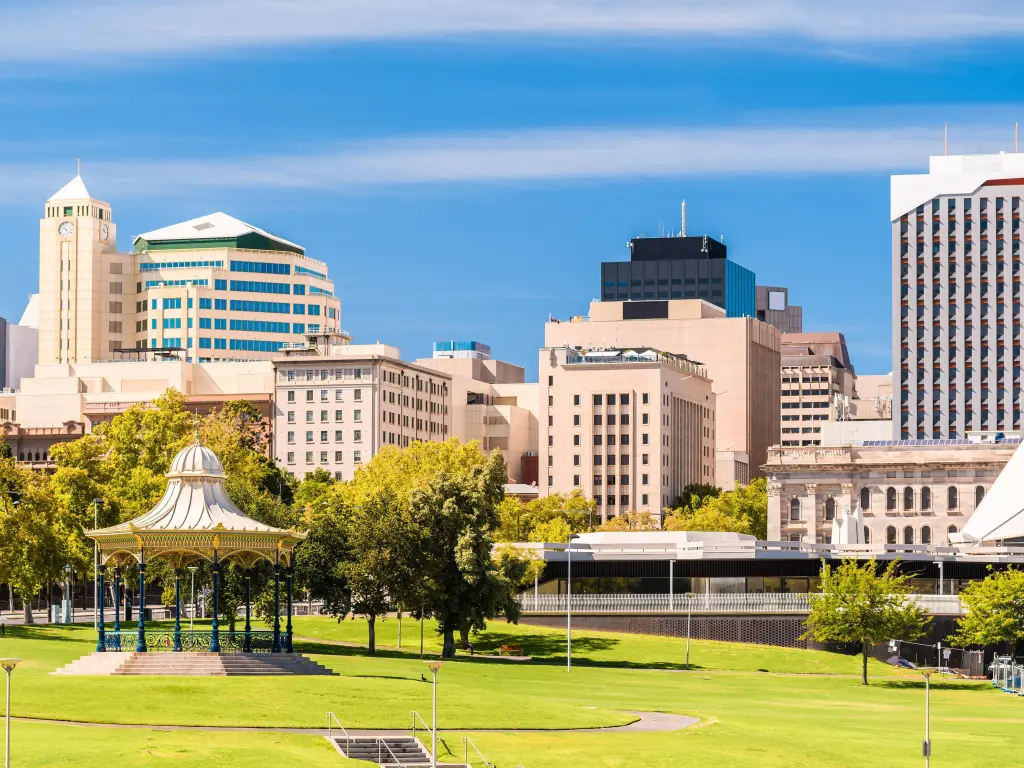
Along the way, each route offers its own unique detours and highlights, from the iconic surf spots on the Great Ocean Road to the rich Aboriginal heritage in the Grampians.
The Great Ocean Road Route spans approximately 1,150 kilometres, taking you through Australia's stunning southeastern coastline. On the other hand, the Grampians National Park Route covers around 800 kilometres, weaving through majestic mountain landscapes and serene natural wonders.
Depending on how much you want to see and do, we recommend taking 3 to 5 days to complete your drive. This will give you plenty of time to soak up all the adventures and highlights that both routes offer.
How long is the road trip from Melbourne to Adelaide, and how many days will it take?
| Route | Distance | Driving Time | Recommended Days |
|---|---|---|---|
| The Great Ocean Road Route | 1,150 km | 14 hours 30 minutes | 5 Days |
| The Grampians National Park Route | 800 km | 9 hours 15 minutes | 5 Days |
What is the best road trip route from Melbourne to Adelaide?
There is no best route for a road trip from Melbourne to Adelaide. That being said, this is how our two routes stack up against each other, looking at some factors that might influence your decision.
| Great Ocean Road Route | Grampians National Park Route | |
|---|---|---|
| Easy Driving | ⭐️⭐️⭐️⭐️ | ⭐️⭐️⭐️⭐️ |
| Scenery | ⭐️⭐️⭐️⭐️⭐️ | ⭐️⭐️⭐️⭐️⭐️ |
| Facilities | ⭐️⭐️⭐️⭐️ | ⭐️⭐️⭐️ |
| Things to do | ⭐️⭐️⭐️⭐️⭐️ | ⭐️⭐️⭐️⭐️⭐️ |
| Traffic Flow | ⭐️⭐️⭐️ | ⭐️⭐️⭐️⭐️ |
Driving from Melbourne to Adelaide via The Great Ocean Road
On this route, you will set out on an unforgettable journey along the iconic Great Ocean Road. This iconic drive takes you through a landscape of dramatic ocean vistas, surf towns, and lush forests, capturing the essence of Victoria's stunning coastline.
Starting from Melbourne, endless coastal views and the Great Ocean Road will stretch out before you. This road is well-maintained and signposted, making it easy to navigate.

As you drive, you'll pass through a series of charming towns and villages, each offering a variety of amenities. From local cafes and seafood to charming boutiques and galleries, there's no shortage of places to explore and enjoy.
Towns like Torquay, Apollo Bay, and Port Campbell not only provide necessary stops for fuel and food but are also hubs of local culture, history, and fun.
The Great Ocean Road is famous for its natural landmarks, including the surf at Bells Beach, the tranquil beauty of Apollo Bay, and the majestic Twelve Apostles. These natural wonders are perfect for photography and exploring on foot.
One of the route's most captivating features is its ever-changing scenery. You'll witness a dynamic landscape, from pristine beaches and rugged cliffs to rainforests and serene bays. Each mile offers something new and exciting.
While the Great Ocean Road is a joy to drive, it's popular with tourists and can get busy, especially during peak seasons. Traffic is heavier around major attractions like the Twelve Apostles. Start your day early to avoid the crowds and fully enjoy the sights.
Driving from Melbourne to Adelaide via Grampians National Park
The Grampians National Park Route will take you through the breathtaking landscapes and rich cultural heritage of one of Australia's most cherished national parks. From rugged mountains to lush forests, the Grampians Route is a nature lover's dream.
The route primarily follows well-maintained roads, making navigation straightforward. While major highways connect the key towns, the smaller country roads that lead you through picturesque farmlands are a major highlight.
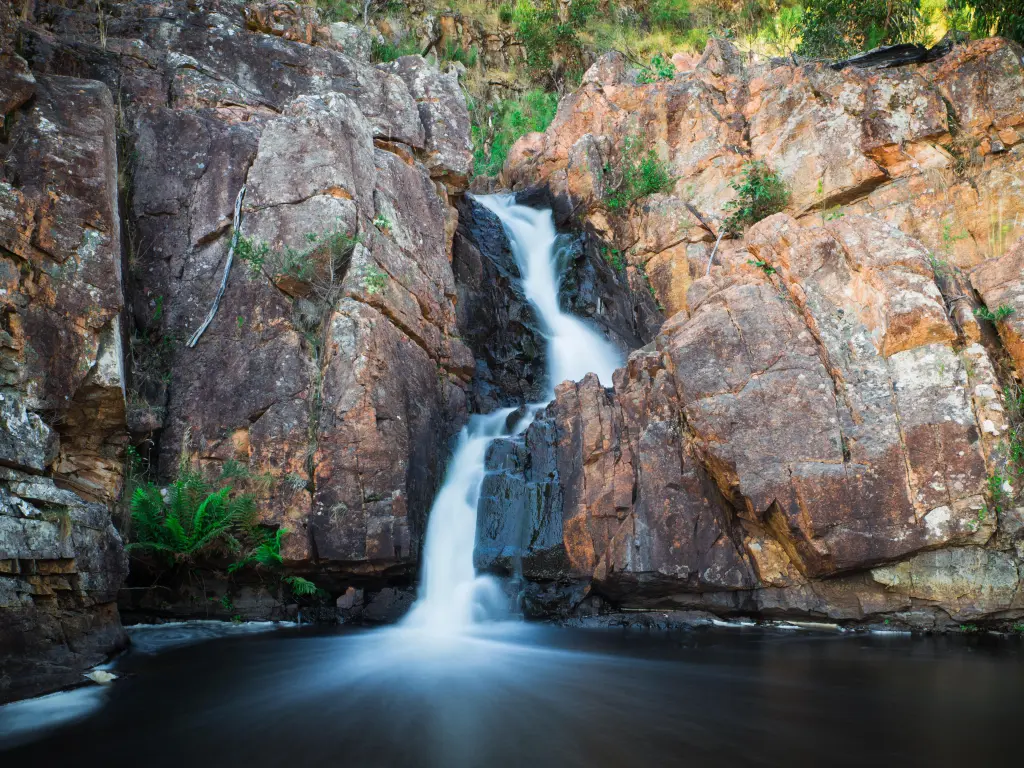
This route is dotted with towns with amenities like restaurants, gas stations, and local shops. Along the way, you can explore charming country towns, each with its own character and stories to tell.
One of the highlights of the route, the Grampians National Park, features outdoor activities such as hiking, rock climbing, and observing Aboriginal rock art. The park's diverse ecosystem is also a haven for wildlife enthusiasts.
While this route is less congested compared to the coastal roads, it's wise to be prepared for traffic, especially during holiday seasons and weekends. The roads through the Grampians can be winding and require careful driving, especially in areas where wildlife crossings are common.
Driving Route from Melbourne to Adelaide
Read on below to learn more about what to expect while driving on our recommended routes.
Driving The Great Ocean Road Route
Begin your journey from Melbourne, taking the M1 towards Geelong. As you approach Geelong, merge onto the B100. In Torquay, explore the town's famous beaches, surf culture, and perhaps visit the Australian National Surfing Museum.
Continue along the Great Ocean Road along the dramatic coastline to Lorne. Here, you can explore beautiful waterfalls like Erskine Falls and enjoy the local art and cafe scene.
Your next stop will be Apollo Bay. You can sample fresh local seafood and enjoy beach activities in this charming town. Apollo Bay also serves as a gateway to the Great Otway National Park, which features rainforest walks and waterfalls.
Continuing west, you'll reach the iconic Twelve Apostles near Port Campbell. These magnificent limestone stacks, best viewed from the Port Campbell National Park Visitor Centre, are a photographer's dream.
Past the Twelve Apostles, the route leads to Warrnambool, a larger town that marks the end of the Great Ocean Road. From Warrnambool, head northwest on the picturesque A1, Princes Highway, towards the South Australian border.
Crossing into South Australia, continue to Mount Gambier, known for its stunning Blue Lake. From Mount Gambier, continue northwest through small towns like Millicent. This last stretch offers a smooth drive through the wine regions and rolling hills of South Australia.
Finally, merge onto the M1, South Eastern Freeway, as you approach Adelaide.

Driving the Grampians National Park Route
Start your drive by heading west on the M8, Western Freeway, towards Ballarat. Ballarat offers the first major stop where you can explore the open-air museum of Sovereign Hill before continuing to Ararat.
From Ararat, your journey takes you further west towards Halls Gap, the gateway to the Grampians National Park. The Grampians present a dramatic change in landscape with rugged sandstone mountains, rich Aboriginal heritage, and abundant wildlife.
Leaving the Grampians, head west through the town of Edenhope towards Naracoorte in South Australia. Naracoorte Caves National Park is a UNESCO World Heritage Site, featuring caves and ancient fossils.
Continue your journey northwest towards Padthaway, where wineries and serene landscapes await. Here, you can indulge in wine tasting in the picturesque vineyards.
Travel north on the A8, passing through the towns of Keith and Tintinara before arriving at Murray Bridge, famous for its riverside and the Murray Bridge Regional Gallery. Finally, head northwest to the heart of Adelaide.
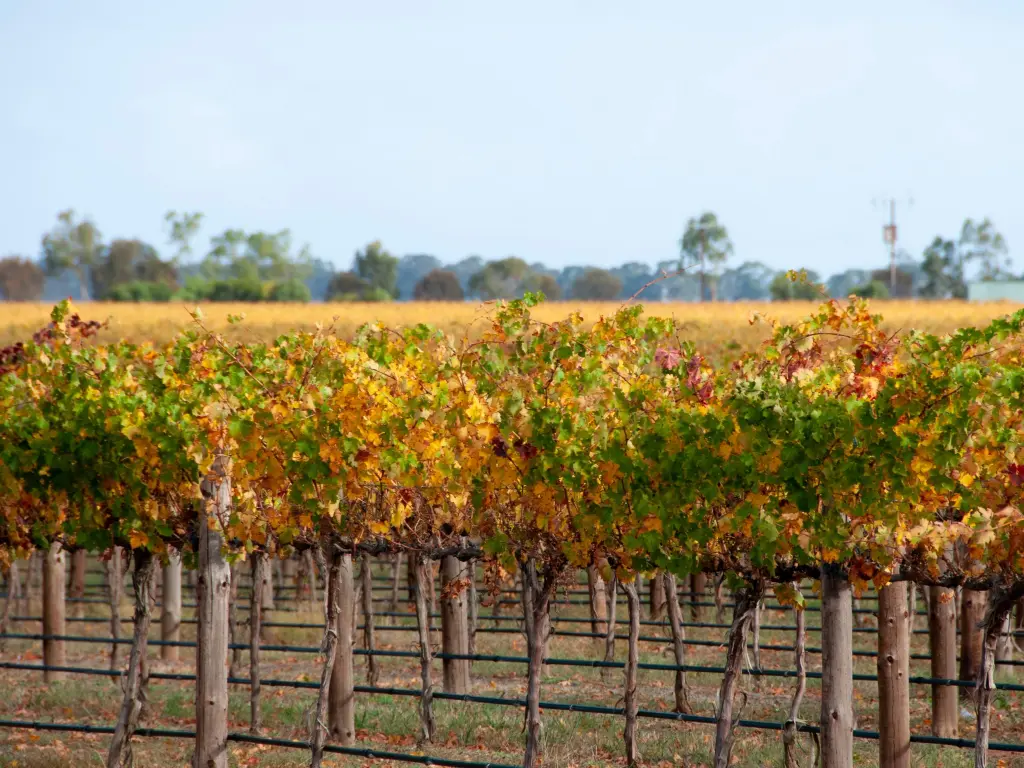
Where to stop overnight on a road trip between Melbourne and Adelaide
The road trip from Melbourne to Adelaide is an adventure filled with breathtaking landscapes and charming towns. To fully enjoy this journey, we recommend staying in one of the beautiful destinations below.
Admire the volcanic landscapes of Mount Gambier
On The Great Ocean Road Route, Mount Gambier is a perfect stopover known for its stunning Blue Lake and volcanic formations. About halfway through the journey, it's the perfect place to unwind and explore.
We suggest staying at the Delgattie Estate, a historic mansion offering luxury accommodation. This elegant estate combines old-world charm with modern amenities, ensuring a comfortable and memorable stay.
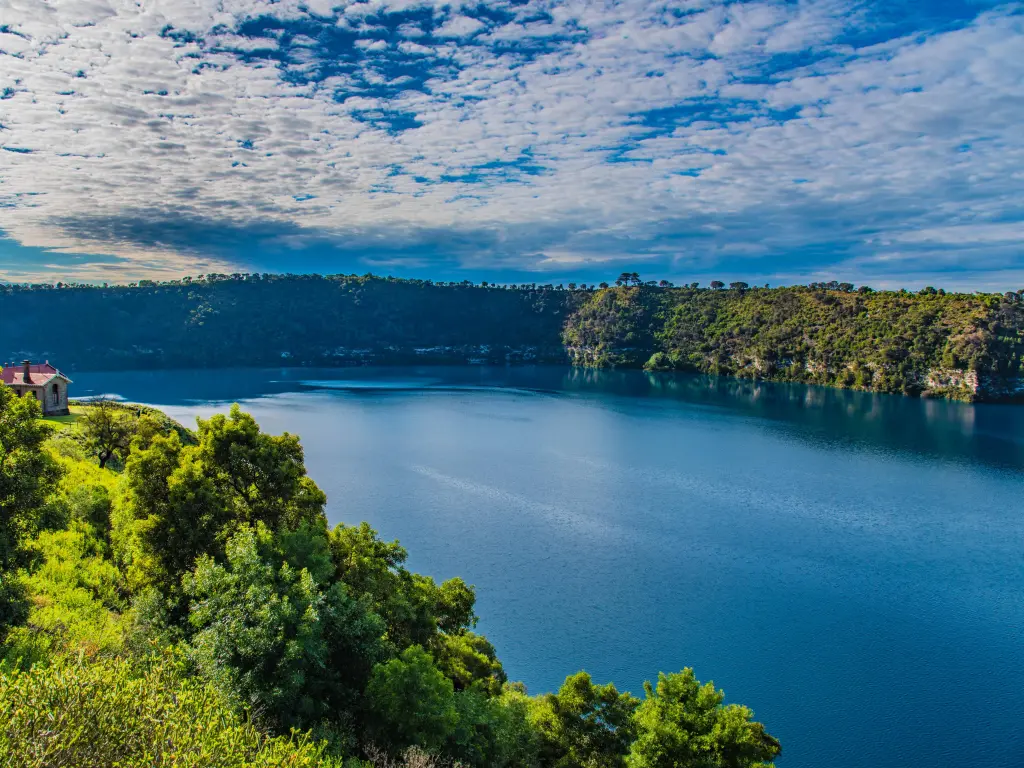
You'll enjoy the hotel's friendly vibes and Australian charm. Not to mention, your rooms are fully equipped and full of comforts to enjoy after your long drive.
Spend your evening exploring the local attractions, such as the Umpherston Sinkhole, or enjoy a relaxing walk around the Blue Lake. Delgattie Estate, with its majestic setting and exquisite service, provides a touch of luxury for you to enjoy between your drive.
Explore the famous caves of Naracoorte
If you're travelling via The Grampians National Park Route, Naracoorte is a must-stop. Famous for its World Heritage-listed caves and fossils, Naracoorte offers a unique blend of nature and history.
For your stay, we recommend staying at the luxurious and highly-rated Avenue Inn. Located conveniently in the heart of Naracoorte, it provides a cosy space to relax after a long drive.
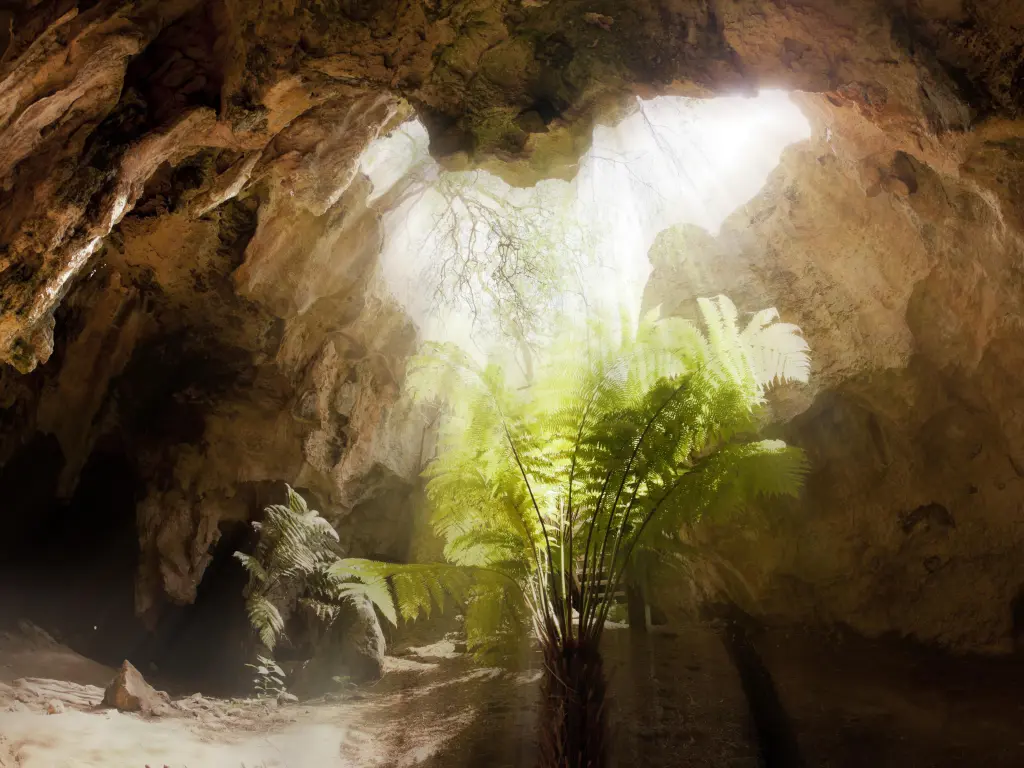
This charming inn is known for its friendly service and comfortable rooms, making it an excellent choice for rest and relaxation. You'll also love the hotel's amazing amenities, such as the two restaurants that serve delicious meals.
After a day of exploring the Naracoorte Caves National Park or enjoying the local wine at nearby vineyards, the Avenue Inn is the perfect place to recharge before continuing your journey.
Our favourite place to stay near Adelaide
When you reach Adelaide, the historical capital of South Australia, treat yourself to a luxurious stay at Eos By Skycity. This contemporary hotel, located in the heart of the city, offers opulent lodging and stunning views.
Eos By Skycity is truly an experience, with its spa, fine dining restaurants, and rooftop bar. Explore Adelaide's cultural scene, visit the Central Market, or simply enjoy the luxurious amenities of the hotel.
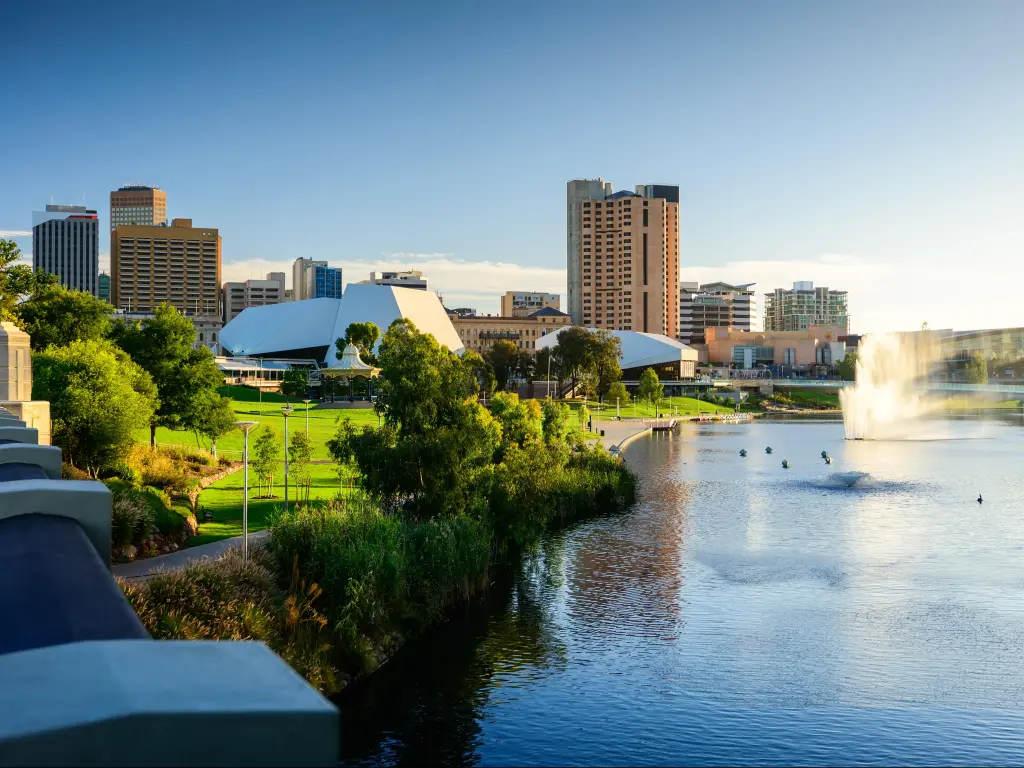
After days of driving, Eos By Skycity is the perfect place to indulge in some well-deserved pampering. You'll love its amenities such as an outdoor swimming pool, room service, and fitness centre.
Nearby the hotel are Adelaide's top sights and experiences. You're just a short walk away from the Adelaide Botanical Garden and downtown's nightlife.
Best time to travel from Melbourne to Adelaide on a road trip
Australia's southeastern coast is dynamic, and weather changes depending on the season. Whether you're taking The Great Ocean Road Route or The Grampians National Park Route, each season brings its own unique experience.
Below are our recommendations for the best times to travel from Melbourne to Adelaide, along with their benefits and drawbacks.
Travelling to Adelaide from Melbourne in summer
On the Great Ocean Road Route, you'll experience warmer weather and longer days in the summer, perfect for beach activities and coastal walks. The ocean breeze keeps the climate enjoyable, especially in coastal towns like Torquay and Apollo Bay.
However, expect higher traffic and crowded tourist spots. Accommodation prices also tend to be at their highest.
On our alternative route, the Grampians National Park is ideal for hiking and other outdoor activities in summer. Wildlife is abundant, and the landscape is green and beautiful.
Like the coastal route, summer can bring more visitors to the Grampians, especially around popular spots like Halls Gap. It's the perfect time if you enjoy a lively atmosphere and don't mind a bit of company on the trails.
Travelling to Adelaide from Melbourne in winter
As you might expect, winter brings cooler temperatures, which can be quite pleasant for outdoor activities and cheaper for accommodation. You might even see occasional snow on the Grampian region's mountains.
On The Great Ocean Road, winter means fewer crowds and a more serene driving experience. However, the ocean can be rough, and some beach activities may not be possible.
Travelling to Adelaide from Melbourne in the shoulder seasons
Spring and autumn are arguably the best times on either route. The weather is mild, and the changing seasons bring a stunning transformation in the landscapes.
In spring, the Grampians burst into life with wildflowers, and wildlife is active. Along The Great Ocean Road, the spring bloom adds a burst of colour to the coastal vegetation.
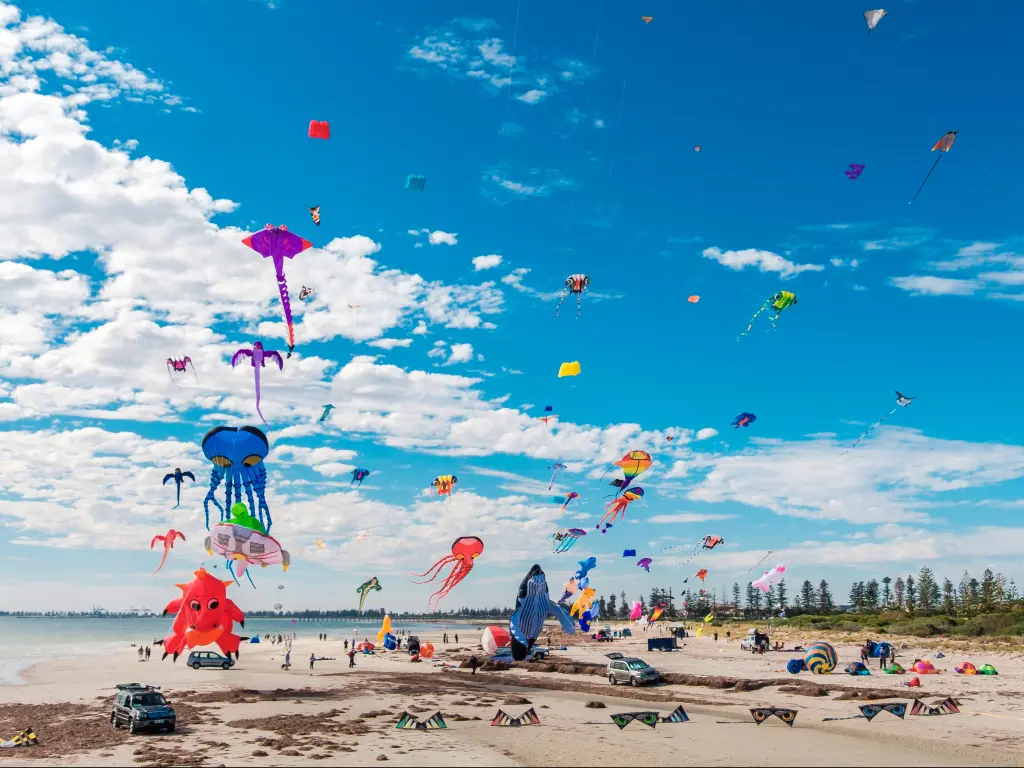
Autumn offers fewer tourists and comfortable temperatures. The vineyards along The Great Ocean Road, especially near Adelaide, are picturesque during this season.
For those interested in cultural events, planning your trip to coincide with local festivals in either spring or autumn can add an extra layer of enjoyment to your road trip. If you visit Adelaide in autumn, you can enjoy Adelaide International Kite Festival in March-April.
The best things to see and do on a road trip from Melbourne to Adelaide
There's so much to experience and explore along both routes on this drive from Melbourne to Adelaide. Below are our top destinations so you can plan your ultimate drive.
On the Great Ocean Road Route
Torquay: Known as the surf capital of Australia, Torquay is famous for its beautiful beaches, surf culture, and as the starting point of the Great Ocean Road.
Point Addis Cliffs: Stunning coastal cliffs offering panoramic views of the Southern Ocean, popular for walks and marine life observation.
Great Otway National Park: A diverse park with lush rainforests, waterfalls, and abundant wildlife, offering numerous trails for hiking and exploration.
Hopetoun Falls: A picturesque waterfall in the Great Otway National Park, cascading into a lush fern-filled valley, accessible via a scenic viewpoint.
Twelve Apostles: Iconic limestone stacks rising majestically from the Southern Ocean, offering breathtaking views, especially at sunset.
The Razorback: A natural rock formation near the Twelve Apostles, known for its unique, razorback-like shape eroded by wind and waves.
Thunder Cave: Dramatic coastal cave where you can hear the thunderous sound of waves crashing against the rocks.
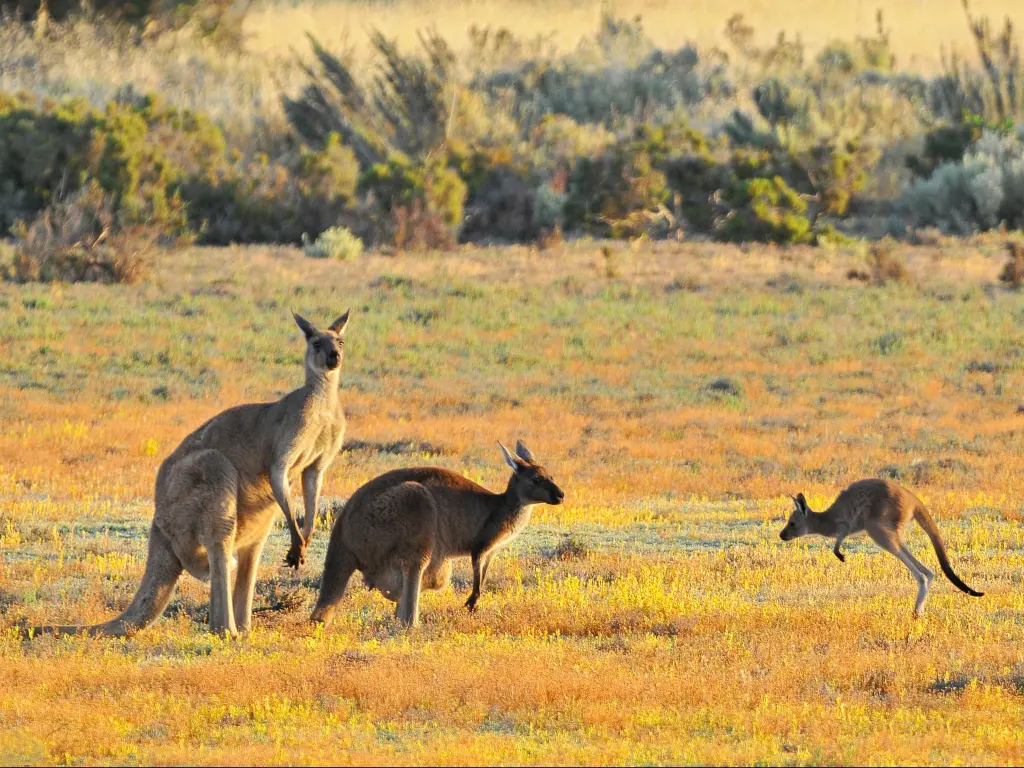
Mutton Bird Lookout and Island Arch Lookout: Scenic spots offering spectacular coastal views, including the collapsed Island Archway and thriving muttonbird colonies.
Childers Cove: A serene and less crowded beach near Warrnambool, known for its clear waters and picturesque setting.
Warrnambool and Logan's Beach: Warrnambool is a city famous for whale watching during the breeding season.
Port Fairy and Tower Hill Wildlife Reserve: A charming historic town, Port Fairy is near the Tower Hill Wildlife Reserve, a haven for native wildlife within an extinct volcano crater.
Mt Gambier and Umpherston Sinkhole: Mount Gambier, known for its unique Blue Lake, and the nearby Umpherston Sinkhole, a beautifully landscaped sunken garden.
The Big Lobster: An iconic roadside attraction in Kingston, famously known as 'Larry the Lobster,' showcasing the region's lobster fishing heritage.
Robe: A historic seaside town offering beautiful beaches, a charming main street with boutiques and cafes, and a rich maritime history.
Cape Jaffa: Known for its lighthouse and tranquil beaches, Cape Jaffa is a peaceful coastal spot ideal for relaxation and fishing.
Coorong National Park: A stunning national park featuring long, shallow lagoons, diverse birdlife, and beautiful, remote beaches.
On the Grampians National Park Route
Melton Botanic Garden: A tranquil oasis showcasing native and drought-tolerant plants from Australia and around the world, perfect for a leisurely stroll.
Ballarat Wildlife Park: An interactive wildlife park offering close encounters with a variety of Australian animals, including kangaroos, koalas, and reptiles.
J Ward Museum, Ararat: A museum set in a former psychiatric hospital and prison, offering insight into Victoria's past.
Mackenzie Falls: One of the largest and most spectacular waterfalls in the Grampians, with a series of cascades flowing over enormous cliffs.
Grampians National Park: A nature reserve known for its stunning sandstone mountains, rich Aboriginal history, and diverse array of wildlife and wildflowers.
Billimina Shelter and Rock Art Site: A significant Aboriginal rock art site in the Grampians, showcasing ancient drawings that offer a glimpse into Indigenous history.
Rocklands Reservoir: A large, picturesque reservoir ideal for fishing, boating, and camping, surrounded by a serene natural landscape.
Harrow and Harrow Discovery Centre: A historic town with a discovery centre that narrates the region's past, including the story of Australia's first Aboriginal cricket team.
Naracoorte: A charming town famous for its Sheep's Back Museum and Regional Art Gallery, celebrating the region's wool industry and artistic talent.

Naracoorte Caves National Park: A World Heritage site renowned for its extensive fossil record and captivating cave tours showcasing ancient natural history.
Padthaway Estate Winery: A premier winery set in the lush Padthaway region, offering tastings of exquisite wines in a picturesque vineyard setting.
Landrover on a Pole: An iconic landmark in Keith, featuring a Land Rover perched high on a pole, symbolising the region's agricultural heritage.
Boothby Rocks: Impressive granite rock formations near Bordertown, offering a unique natural attraction and a great spot for photography.
Bordertown and Clayton Farm Heritage Museum: Bordertown is home to this museum, which preserves the area's farming history with a collection of vintage machinery and historic buildings.
Ngarkat Conservation Park: A vast natural reserve offering rugged wilderness experiences, bushwalking, and birdwatching in a pristine environment.
Old Tailem Town Pioneer Village: An authentically recreated pioneer village near Tailem Bend, showcasing over 100 buildings and artefacts from the early 1900s.
Pangarinda Botanic Garden: A botanical garden near Wellington, specialising in Australian native plants and serving as a sanctuary for birdlife and nature lovers.
Monarto Safari Park: One of the world's largest open-range zoos, offering an African safari experience with a range of exotic animals in a natural setting.

